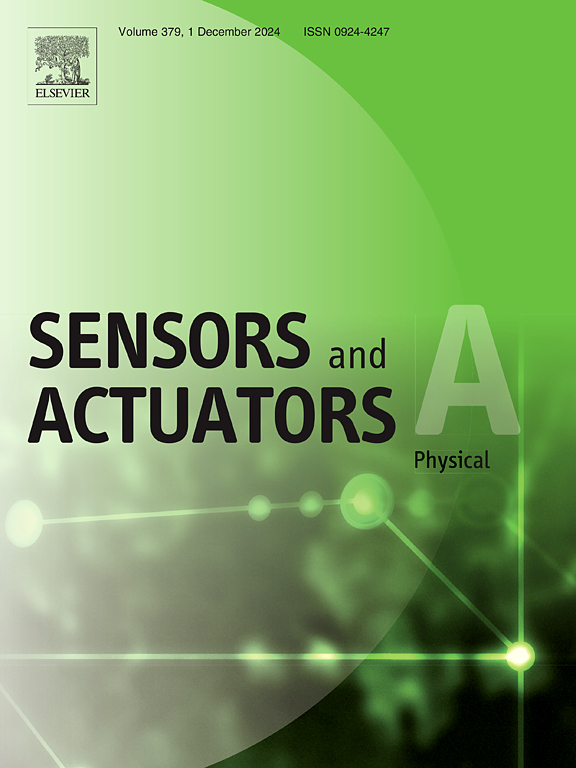An ultrasound imaging algorithm for enhancing the imaging quality of piezoelectric transducer array ultrasound imaging systems
IF 4.9
3区 工程技术
Q2 ENGINEERING, ELECTRICAL & ELECTRONIC
引用次数: 0
Abstract
Ultrasonic imaging, as a fundamental methodology in nondestructive testing, achieves defect characterization through acoustic interaction mechanisms including reflection at impedance boundaries, microstructural scattering, and frequency-dependent attenuation. However, conventional delay-and-sum (DAS) beamforming compromises spatial resolution and contrast performance due to inherent limitations such as main lobe broadening, sidelobe leakage artifacts, and coherent noise interference. The spatial spectrum coherence factor (SSCF) algorithm proposed in this paper is based on the difference in the energy distribution of the spatial spectrum of the echo data after the Fourier transform, and enhances the differentiation between the defects and the background region by the product of the low-frequency component and the total energy; the coherence energy factor (CEF) algorithm proposed in this paper combines the 2-norm energy characterization of the echo signal with the symbolic coherence weighting to suppress the background clutter and reserve the details of the defects. Then the SSCF methodand CEF method are fused to obtain the SSCF-CEF beamforming algorithm, which achieves a more significant enhancement of the imaging effect. The experiment utilizes 20# carbon steel test block, aluminum test block and actual rail test block to verify the effectiveness of the algorithm. The results show that: compared with DAS, the SSCF-CEF algorithm improves the contrast ratio (CR) by 438.26 % and reduces the array performance index (API) by 47.14 % in 20# steel specimen; the half-peak full-width value is optimized to 1.78 mm in the aluminum specimen experiment, which is 53.9 % lower than that of DAS, and compressed API by 90.21 % compared with DAS and achieved a jump of CR by 172.39 %; the CR in the rail inspection scenario is improved by 287.16 %, while the API is reduced by 91.81 %. In addition, SSCF and CEF alone are significantly better than traditional generalized coherence factor and coherence factor algorithms.
一种提高压电换能器阵列超声成像系统成像质量的超声成像算法
超声成像作为无损检测的基本方法,通过阻抗边界反射、微结构散射和频率相关衰减等声学相互作用机制实现缺陷表征。然而,传统的延迟和(DAS)波束形成由于固有的限制,如主瓣展宽、副瓣泄漏伪影和相干噪声干扰,影响了空间分辨率和对比度性能。本文提出的空间谱相干因子(SSCF)算法是基于回波数据经傅里叶变换后空间谱能量分布的差异,通过低频分量与总能量的乘积增强缺陷与背景区域的区分;本文提出的相干能量因子(CEF)算法将回波信号的2范数能量特征与符号相干加权相结合,抑制背景杂波,保留缺陷的细节。然后将SSCF方法与CEF方法融合,得到SSCF-CEF波束形成算法,该算法对成像效果有了更明显的增强。实验采用20#碳钢试块、铝试块和实际钢轨试块验证算法的有效性。结果表明:与DAS相比,SSCF-CEF算法使20#钢试件的对比度(CR)提高了438.26 %,阵列性能指数(API)降低了47.14 %;在铝试样实验中,优化后的半峰全宽值为1.78 mm,比DAS降低53.9% %,压缩API比DAS降低90.21 %,CR提高172.39 %;轨检场景CR提高287.16 %,API降低91.81 %。此外,单独的SSCF和CEF算法明显优于传统的广义相干因子和相干因子算法。
本文章由计算机程序翻译,如有差异,请以英文原文为准。
求助全文
约1分钟内获得全文
求助全文
来源期刊

Sensors and Actuators A-physical
工程技术-工程:电子与电气
CiteScore
8.10
自引率
6.50%
发文量
630
审稿时长
49 days
期刊介绍:
Sensors and Actuators A: Physical brings together multidisciplinary interests in one journal entirely devoted to disseminating information on all aspects of research and development of solid-state devices for transducing physical signals. Sensors and Actuators A: Physical regularly publishes original papers, letters to the Editors and from time to time invited review articles within the following device areas:
• Fundamentals and Physics, such as: classification of effects, physical effects, measurement theory, modelling of sensors, measurement standards, measurement errors, units and constants, time and frequency measurement. Modeling papers should bring new modeling techniques to the field and be supported by experimental results.
• Materials and their Processing, such as: piezoelectric materials, polymers, metal oxides, III-V and II-VI semiconductors, thick and thin films, optical glass fibres, amorphous, polycrystalline and monocrystalline silicon.
• Optoelectronic sensors, such as: photovoltaic diodes, photoconductors, photodiodes, phototransistors, positron-sensitive photodetectors, optoisolators, photodiode arrays, charge-coupled devices, light-emitting diodes, injection lasers and liquid-crystal displays.
• Mechanical sensors, such as: metallic, thin-film and semiconductor strain gauges, diffused silicon pressure sensors, silicon accelerometers, solid-state displacement transducers, piezo junction devices, piezoelectric field-effect transducers (PiFETs), tunnel-diode strain sensors, surface acoustic wave devices, silicon micromechanical switches, solid-state flow meters and electronic flow controllers.
Etc...
 求助内容:
求助内容: 应助结果提醒方式:
应助结果提醒方式:


